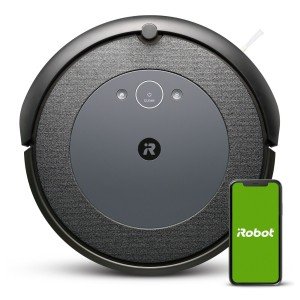The Rise of Robotic Vacuums: A Comprehensive Overview
In today's busy world, technology is regularly evolving to make our lives easier, and the household cleaning section has seen one of the most noteworthy developments: the robotic vacuum. This intelligent gadget not just saves energy and time however also makes sure a cleaner home environment with minimal manual effort. This short article digs into the remarkable development of robotic vacuums, how they work, their advantages and downsides, market trends, and future directions.
The Evolution of Robotic Vacuums
Robotic vacuums have actually made great strides because their inception in the late 1990s. The first commercially available robotic vacuum was presented in 1996, followed by various models, each developed with intensifying elegance and features. Here is a short timeline of robotic vacuum advancement:
| Year | Occasion |
|---|---|
| 1996 | Release of the very first robotic vacuum (Electrolux's Trilobite) |
| 2002 | iRobot Roomba is launched, making robotics mainstream |
| 2010 | Introduction of sophisticated mapping and navigation functions |
| 2017 | Integration of AI and smart home compatibility |
| 2022 | Introduce of extremely advanced models including self-emptying dustbins |
How Robotic Vacuums Work
Robotic vacuums make use of a mix of sensing units, algorithms, and expert system to navigate spaces efficiently. Here's how they operate:
- Navigation: Most robotic vacuums utilize a series of sensing units to identify challenges and navigate around furnishings. Some high-end designs incorporate LIDAR (Light Detection and Ranging) technology to develop in-depth maps of the environment.
- Cleaning Mechanisms: They are equipped with turning brushes and suction systems to gather particles from various surface areas. Depending on the model, they can shift between carpets and hard floorings effortlessly.
- Smart Features: Many modern robotic vacuums are Wi-Fi enabled, permitting users to control them remotely through a smartphone app. Functions frequently include scheduling, mapping out cleaning paths, and combination with other smart home devices.
- Self-Maintenance: High-end units may feature self-emptying capabilities, where the robot can dock itself to a base that collects dust and particles without human intervention.
Benefits of Robotic Vacuums
Robotic vacuums have actually amassed enormous popularity, and for good reasons. Here are some of the most significant benefits:
- Time-Saving: Automating the cleaning process permits users to take part in other significant activities.
- Effective Cleaning: Regular cleaning can be quickly accomplished by arranging the robot to tidy daily or weekly, keeping dirt and irritants at workable levels.
- Compact Design: Their small size permits them to fit under furniture and in hard-to-reach locations.
Regardless of their advantages, robotic vacuums likewise feature restrictions:
- Limited suction power: While they work for maintaining tidy floors, they may not match the deep cleaning of conventional vacuums.
- Battery life: Most models need to return to their dock after a specific period of usage.
- Initial costs: High-quality robotic vacuums can be pricey, though rates have actually been reducing with developments in technology.
Existing Market Trends
The market for robotic vacuums is broadening quickly. According to a current marketing research report, the worldwide robotic vacuum cleaner market is anticipated to reach ₤ 7.2 billion by 2027, growing at a CAGR of 23.5%, driven by several factors:
Increased Adoption of Smart Home Devices
The increase of smart home technology has actually encouraged consumers to integrate robotic vacuums into their homes. Many robotic vacuums work perfectly with home assistants like Amazon Alexa and Google Assistant, simplifying their operation.
Advances in Robotics and AI
As the technology behind robotic vacuums develops, models are being equipped with much better navigation systems, AI algorithms for discovering personal cleaning habits, and improved features for specific floor types.
Concentrate on Health and Hygiene
The heightened awareness of cleanliness and hygiene, especially due to current international occasions, has actually driven customers to invest in gadgets that regularly eliminate dust, allergens, and family pet hair from their homes.
Future Directions
As technology advances, robotic vacuums are expected to progress further, including features that increase their effectiveness in homes. Anticipated advancements include:
- Improved AI Learning: With developments in maker learning, future models will be better at comprehending their environment and adapting to the needs of their owners.
- Multi-Purpose Design: Potential future models might include functions for mopping, sanitizing, and air filtration in addition to vacuuming.
- Sustainability: As eco-consciousness rises, producers are likely to focus on energy performance, recyclable products, and sustainable production practices.
Frequently Asked Questions About Robotic Vacuums
1. Can robotic vacuums vacuum on carpet?Yes, most robotic vacuums can shift between different floor types, including carpets and difficult floors. 2. How typically ought to I run my robotic vacuum?It depends
on your family's cleaning needs, but lots of users
arrange their robotic vacuums to run everyday or every number of days. 3. Are robotic vacuums worth the investment?For numerous customers, the time conserved and convenience offered by robotic vacuums makes them beneficial,
specifically for hectic households. 4. Can I control my robotic vacuum remotely? best auto vacuum can be controlled through a smartphone app, enabling scheduling and monitoring from anywhere. 5. Do I still require a standard vacuum cleaner?While robotic vacuums effectively handle daily cleaning, a conventional vacuum might still be essential for deep cleans up or hardermesses. The development of robotic vacuums shows a substantial leap in automating housework, combining ingenious technology with user-friendly operation. As the pattern towards smart homes continues and consumer expectations develop, robotic vacuums will likely keep improving, supplying ever-greater convenience and effectiveness in keeping tidy home. As house owners consider the possible advantages and constraints of these devices, it is clear that robotic vacuums have actually solidified their track record as vital tools in modern home management.

